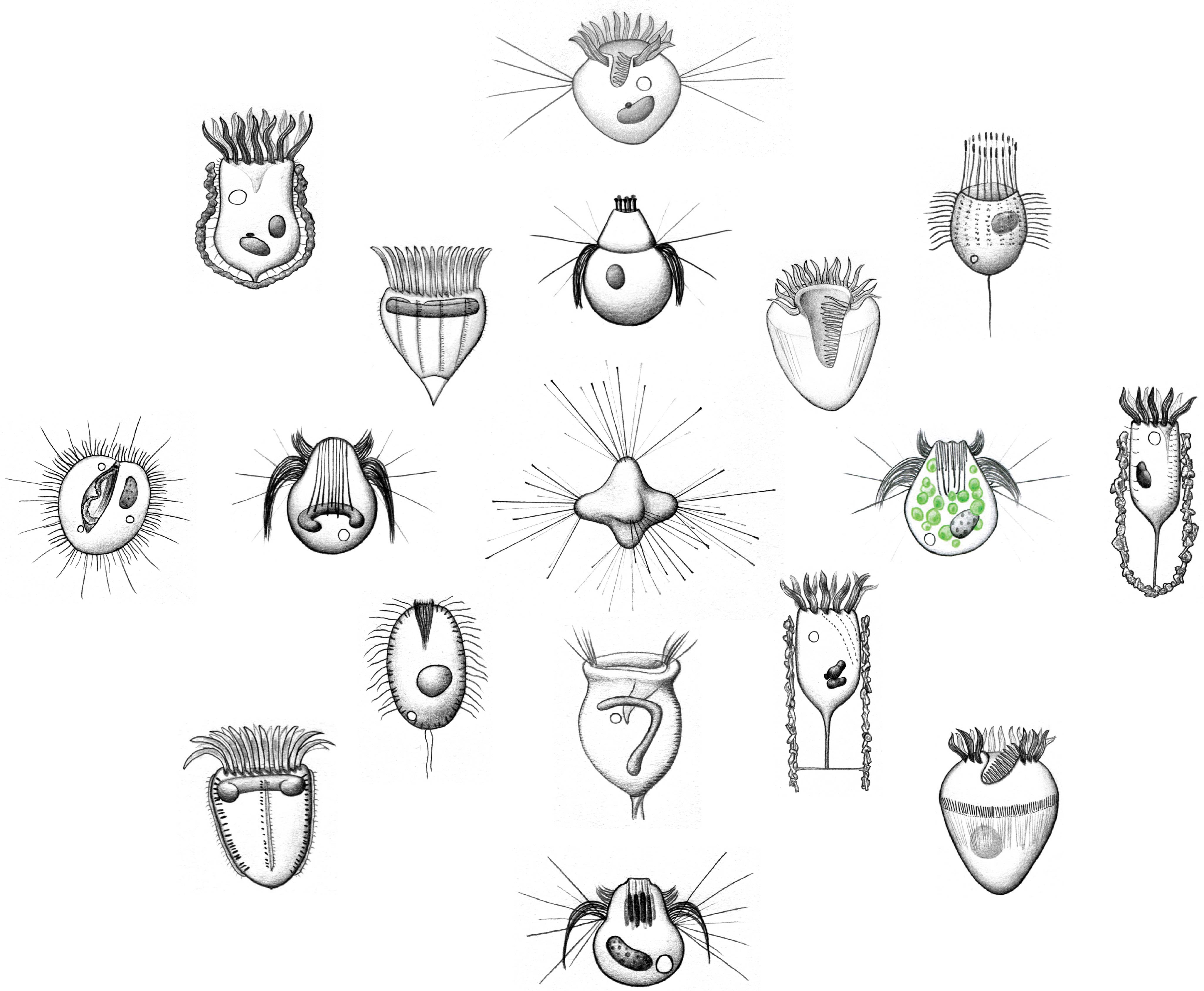Navigation auf uzh.ch
Navigation auf uzh.ch
Our research object is primarily Lake Zurich where we follow the tradition of long term monitoring (since 50 years). The various interactions between prokaryotes and unicellular eukaryotes (protists) in freshwater systems are in focus of our research. Food webs in lakes and ponds are based on the quantitative importance (biomass) of a tremendous diversity of prokaryotes and protists. Both organismic entities include heterotrophic, (photo)autotrophic and mixotrophic representatives. Prokaryotes are often seen only as potential prey for protists, but interactions are manifold. First, due to overlapping lifestyles and required nutrients, prokaryotes can be efficient competitors of protists in aquatic systems (e.g., cyanobacteria versus algae). Second, bacteria and unicellular eukaryotes may be linked by various symbiotic interactions (from parasitism to mutualism). In addition to the importance of these relationships for the functioning of aquatic systems, we study why and how interactions evolved and will develop in times of ecosystem changes (climate warming).
This strong limnological background is the basis for a better understanding of microbial food web dynamics.
1. Lake warming and microbial food web dynamics in spring: a focus on ciliates
Martina Schuler, Barbara Bassin, Gianna Pitsch, Thomas Posch
Collaboration: Prof. Karel Šimek (Institute of Hydrobiology, Czech Republic)
Funding: SNF project 31003A_182489 (2019-2022)
The multi-decadal rise in air temperatures has a deep impact on thermal budgets of temperate lakes. Warmer water directly affects the phenology of aquatic organisms, however, ‘indirect climate effects’ (changes in physico-chemical parameters) may have even a stronger influence on the biota within food webs. During the last years, we could describe striking effects of changing climate on Lake Zurich (Posch et al. 2012, Yankova et al. 2017). As a key issue, warming of surface (epilimnetic) waters increasingly disrupted complete water turnover (holomixis) in spring, causing an insufficient transport of deep water orthophosphate into the epilimnion. Thus, the phototrophic spring bloom community was cut off from essential nutrients. This reduction in primary production will definitely affect the entire food web as algae are the major source of substrates for bacteria and of food for consumers. As the succession of various ciliate species is tightly coupled to dynamics of their algal and bacterial food items (Šimek et al. 2019), any lake warming induced shifts will strongly affect the ciliate assemblage and the depending higher trophic levels (Posch et al. 2015).
The following scientific questions should be answered:
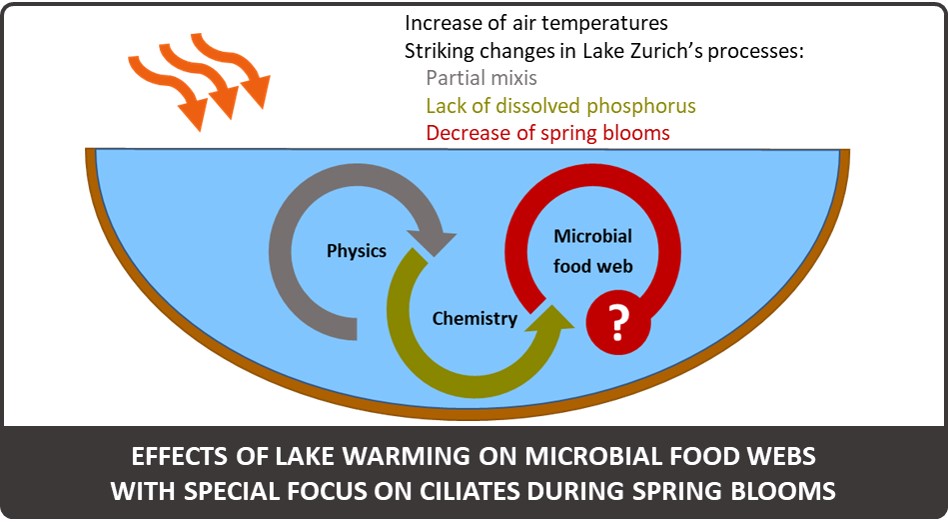
2. Reasons for the growth of Planktothrix rubescens in Lake Zurich and Lake Constance – comparison of long-term data, experimental approaches and genetic analyses
Deborah Knapp, Thomas Posch, Eugen Loher, Daniel Marty, Jakob Pernthaler
Funding: Sub-Project (P6) of the Interreg-Project SeeWandel (13 projects from 7 institutes) – see homepage of SeeWandel (2018-2021)
This project investigates the appearance of the toxic burgundy blood algae (Planktothrix rubescens, in fact a cyanobacterium). Planktothrix rubescens has been inhabiting Lake Zurich for over 100 years and has developed into a dominant organism within the plankton food web over the last 5 decades (Posch et al. 2012). The mass occurrence of this cyanobacterium is now better understood, thanks to the long-term monitoring programs of the Water Supply Zurich and the Limnological Station Kilchberg (University of Zurich). Planktothrix rubescens shows annual blooms despite the significant decrease in nutrients. However, the high P. rubescens biomass causes diatoms and cryptophytes to decline substantially, with strong effects on the total nutrient content of the lake (Yankova et al. 2017).
Since 2014, P. rubescens has been observed aperiodically in great quantities also in Lake Constance, despite significant decreases in nutrient levels. Whether population dynamics of P. rubescens in Lake Constance are comparable to the patterns observed in Lake Zurich, and whether processes promoting the growth of this cyanobacterium are similar, remains to be investigated. It is of great interest to assess which physiological fundamentals enable P. rubescens to colonise lakes that almost have been completely restored in terms of their natural trophic status, and whether genotypes found in Lake Constance and Lake Zurich are similar. P. rubescens is highly toxic and therefore not only an unsuitable food source for plankton, but also an issue for the use of drinking water from a lake.
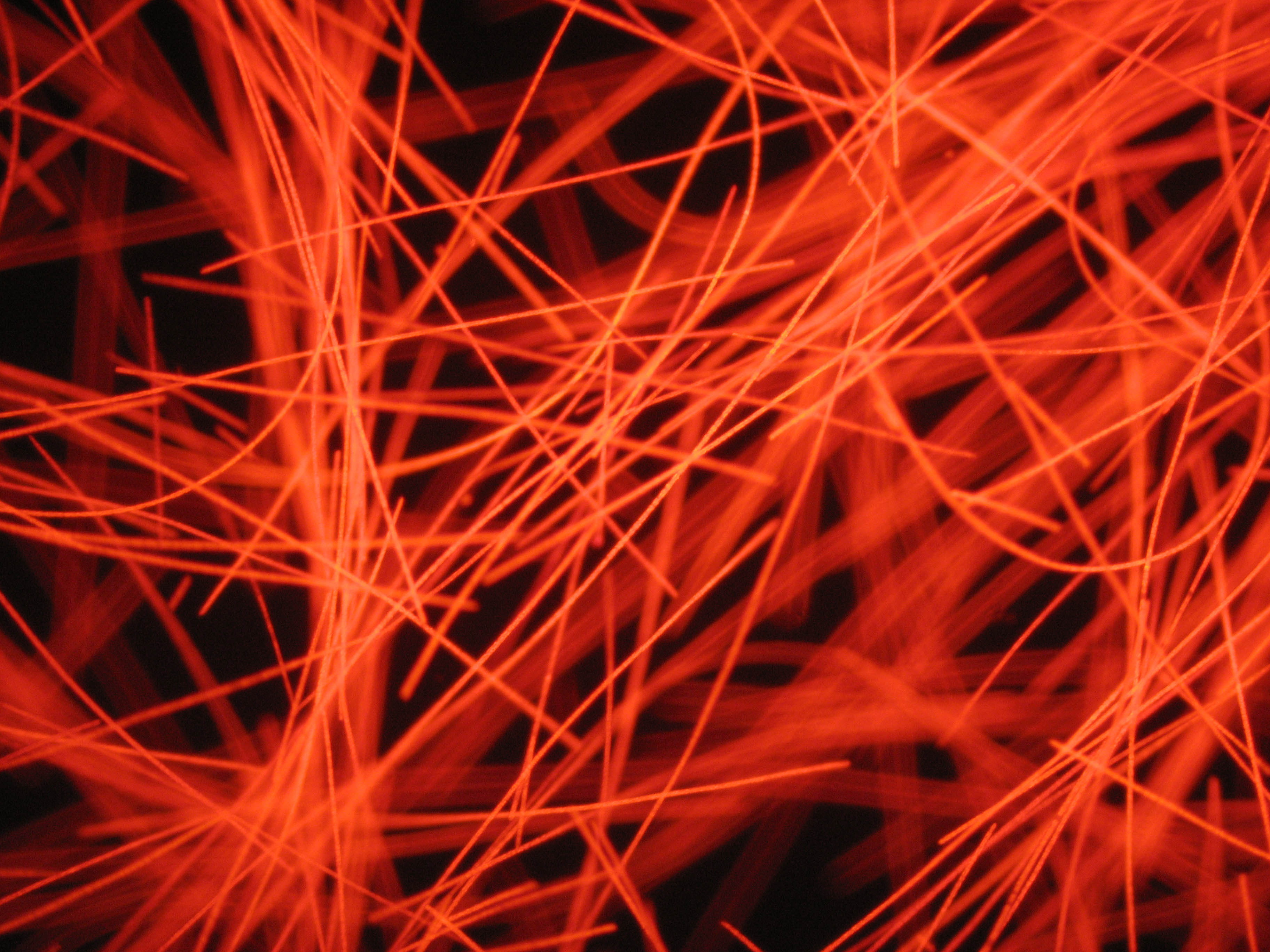
3. Multiparameter probe based and genetic monitoring of Planktothrix rubescens in Lake Zurich
Deborah Kanpp, Eugen Loher, Daniel Marty, Barbara Bassin, Thomas Posch
Funding & Collaboration: AWEL (Amt für Abfall, Wasser, Energie und Luft - Kanton Zürich) & Water Supply Zurich (2019-2022)
Lake Zurich (Switzerland) serves as the major source of drinking water for >1 million people and is thus of great economic importance. A 44 year long-term dataset of the Limnological Station provides strong evidence, that changes in the mixis regime due to warming is coupled to an increasing importance of the filamentous cyanobacterium Planktothrix rubescens. In our weekly to biweekly monitoring of the lake multiple physical and microbial parameters are determined. The goal of this project is to explain current patterns of P. rubescens growth dynamics, understand the impact of the cyanobacterium on food web dynamics, and predict expected changes in Lake Zurich. We apply a holistic limnological approach based on fine-scale temporal and spatial samplings. A detailed genetic characterization of P. rubescens (in terms of gas vesicle and microcystin genotypes) gives new scientific aspects for the long-term dataset.
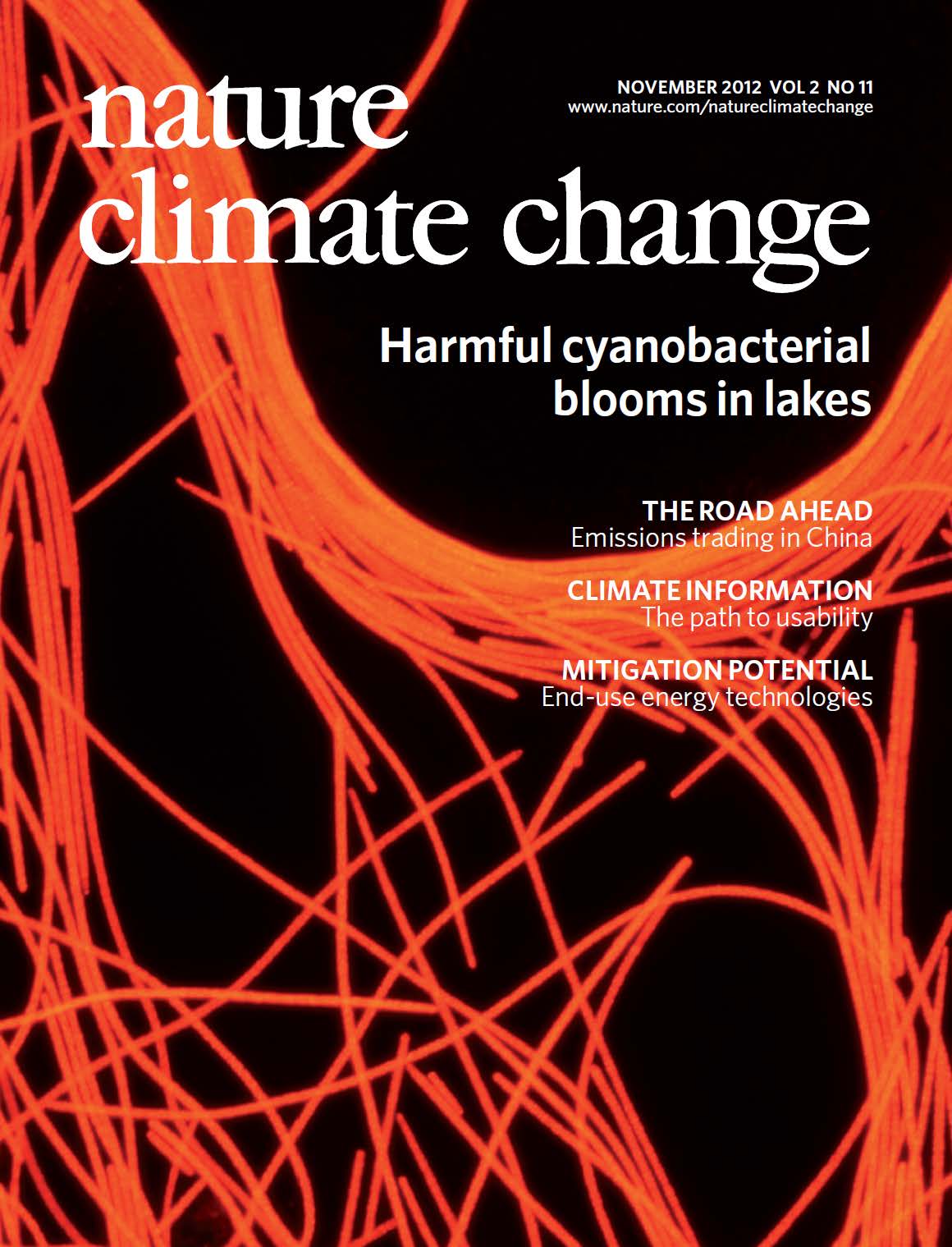
4. Collaborating lab in the project: Pan-European Lake Sampling - Microbial Eco-genomics (PELAGICS)
Thomas Posch, Barbara Bassin, Gianna Pitsch
Collaboration with PIs Rohit Ghai & Michaela Salcher (Institute of Hydrobiology, Czech Republic, Czech Science Foundation Project No.: 20-12496X) (2020-2024)
Freshwater habitats are critical for all terrestrial life, yet the vast majority of their microbial inhabitants (pro- and eukaryotes) remain enigmatic, outside the bounds of cultivation. The recent development of novel cultivation methods, coupled with advances in sequencing now provides an opportunity to finally unravel freshwater microbial diversity. The PELAGICS project plans a coordinated Pan-European sampling campaign (70 lakes) with 24 collaborating scientists from 16 European countries. The project lead is situated at the Institute of Hydrobiology, Czech Reprublic (PI Rohit Ghai). With novel media mimicking natural conditions and semiautomated high-throughput isolation we aim for stable cultivation and whole-genome sequencing of 500 prokaryotes and 50 unicellular eukaryotes. Moreover, terabyte scale deepmetagenomic sequencing (ca. 18 TB) will allow recovery of thousands of metagenomeassembled genomes for pro-, eukaryotes and viruses. This large-scale effort will finally uncover the microbial diversity (pro- and eukaryotes), their natural interactions and ecological roles in aquatic food webs.
5. Feeding of protists on toxic filamentous cyanobacteria
Thomas Posch, Master students
The filamentous cyanobacterium Planktothrix rubescens is generally considered toxic for eukaryotes. Intact cyanobacterial cells contain cyclic heptapeptides (microcystins - MCs) which are potent hepatotoxins and potentially act as tumour promoters on a molecular base. MCs also act as efficient inhibitors of eukaryotic serine/threonine-specific protein phosphatases. Potential consumers (zooplankton and -benthos) get in direct contact with the endotoxins when cyanobacterial filaments are ingested and digested.
Although cyanobacteria are often regarded as inappropriate or toxic food for most consumers, divers protistan groups have been described as efficient predators of cyanobacterial blooms. It is of particular interest to better understand how these protists, being eukaryotic organisms, are able to survive a toxic diet. Former detailed studies about the amoeboid Nucleariidae and their interactions with filamentous cyanobacteria gave us a good scientific background about this topic (Dirren et al. 2014, Dirren & Posch 2016, Dirren et al. 2017). Future studies with already cultivated ciliate and other amoeboid species will follow. This knowledge will be of great relevance for a better understanding of natural degradation processes of MCs in Lake Zurich.
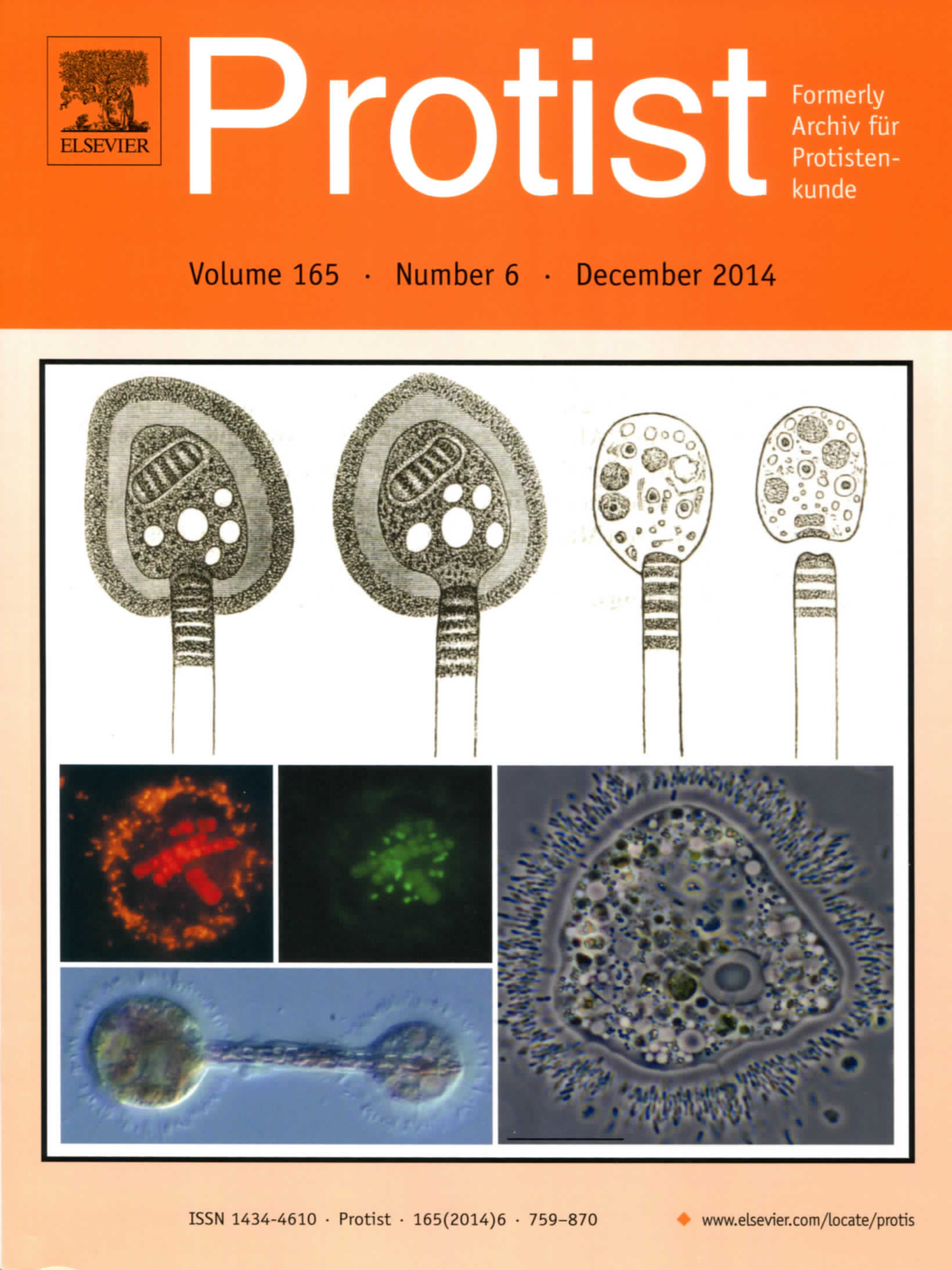
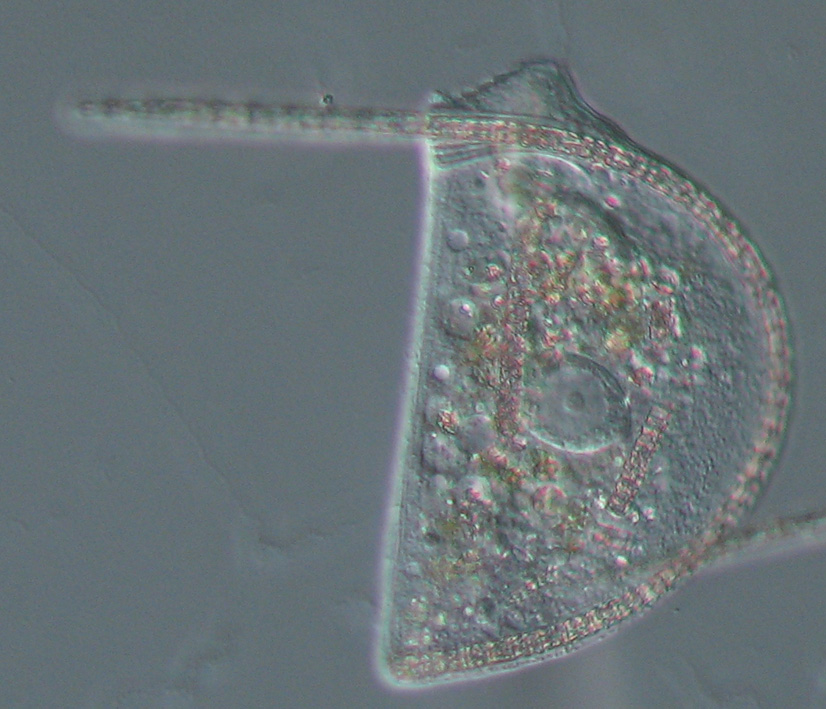
6. Planktonic Freshwater Ciliates: from morphology to molecules
Gianna Pitsch, Dominique Bühler, Thomas Posch
Planktonic freshwater ciliates are still our favorite protists. In course of our monitoring programs on Lake Zurich, we also focus on fine-scale temporal and spatial dynamics of the ciliate assemblage. However, most planktonic ciliates have short-lived maxima and many species seem to be rare or ephemeral. The classical morphospecies based methods have limitations concerning the amount and volume of samples that can be processed (Posch et al. 2015). Thus for high sampling frequencies at large scales, high throughput sequencing (HTS) of freshwater ciliates seems to be one promising tool. However, planktonic ciliate taxa are still poorly represented in public databases and the interpretation of HTS data depends on profound reference sequences. Through linking operational taxonomic units (OTUs) with known morphospecies, we can use the deep knowledge about the autecology of these species (Pitsch et al. 2019). In addition to HTS, we are developing a suitable protocol for the fluorescence in situ hybridization of planktonic ciliates. By this technique larger sample volumes at high sampling frequencies can be evaluated with species-specific probes for even closely related, similar looking as well as very tiny ciliates.
